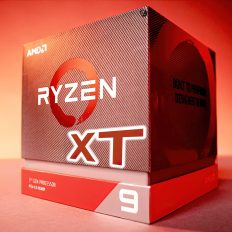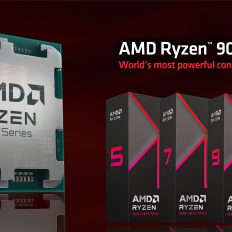AMD has teased the proposition of leveraging AI for its next-gen FSR "FidelityFX Super Resolution" technology.
Following NVIDIA DLSS & Intel XeSS, AMD Also Investing To Incorporate AI Within Its Next-Gen FSR "FidelityFX Super Resolution" Technology
AI has been a big part of upscaling technologies such as NVIDIA's DLSS which has been leveraging its tensor core architecture since 2018's Turing launch. Intel also jumped onboard the upscaling bandwagon with its XeSS technology which harnessed the XMX AI cores featured on its discrete GPU architecture codenamed Alchemist but there was one major GPU vendor that was missing out on the AI fun.
Since the announcement of FSR, AMD has been against the use of AI for its upscaling technology and even stated that AI has other meaningful use cases besides upscaling technologies. This has allowed AMD to make FSR slightly more open towards its old GPU architecture and even offer support on products from competitors such as NVIDIA & Intel. AMD does incorporate AI cores in its latest consumer-tier hardware such as RDNA 2 and RDNA 3 but it looks like we will finally get to see them being used properly as AMD has teased plans to incorporate the use of AI in future versions of its popular FSR upscaling technology.
2024 for us is a huge year because we have spent so many years developing hardware and software capabilities for AI. We've just completed AI enabling our entire portfolios so cloud, edge, PCs, our embedded devices, our gaming devices, we're enabling our gaming devices to upscale using AI and 2024 is really a huge deployment year for us so now the bedrock's there, the capabilities are there.
In a jam-packed session with No Priors, AMD's CTO, Mark Papermaster, highlighted the fact that they are working to bring AI-powered upscaling technology to gaming devices. By gaming devices, Mark may not just be talking about the Radeon GPU lineup but also consoles as they amount to a significant portion of AMD's gaming business. While we probably won't see this technology in the current iteration of consoles, rumors are already floating of a refreshed lineup from both Sony & Microsoft so that could be a pivot point for AMD to deploy its next-gen upscaling tech.

There are more advantages of AI-based upscaling than downsides. The major upside is that upscaling done on AI simply looks better and while there's no doubt that FSR can sometimes reach the same level of visual/image quality as its competitors, often, that's not the case and AI-based solutions are ahead. AMD can eliminate that bottleneck with the use of AI.
The downside is that AI-specific hardware needs to be there to run such algorithms and that means that future FSR technologies might be limited to just a specific architecture which is also the case with NVIDIA's DLSS with DLSS 3 only offered on the latest RTX 40 GPUs (Frame Generation support). AMD on the other hand offers FG support on its latest and older hardware but the quality and smoothness have been a bit lacking against DLSS 3. Intel is also investing in its own Frame Generation tech which will utilize Frame Extrapolation instead of Interpolation (DLSS / FSR).
News Source: VideoCardz





